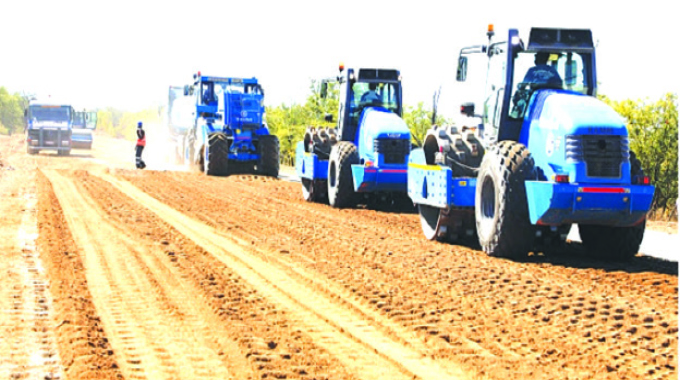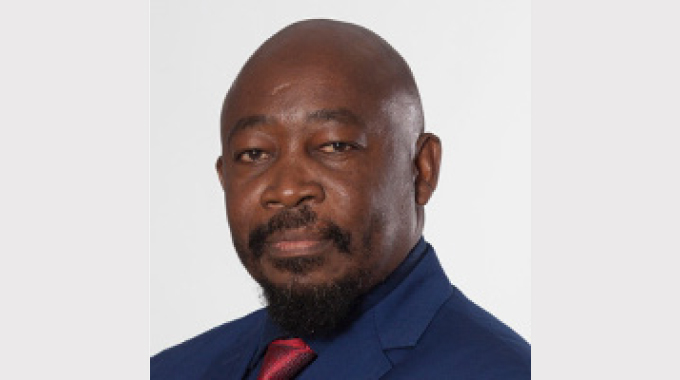Firm vision, path prop development

Lovemore Chikova-Development Dialogue
The new approach to doing business ushered in by President Mnangagwa in the New Dispensation has allowed a steady, but sure process of development to take root in the country.
Everywhere you go throughout the country, you find some developmental projects going on, while in other areas, people are already enjoying the benefits of such progressive actions.
It suddenly dawns that under President Mnangagwa and in the last five years, Zimbabwe has made great strides in its developmental trajectory, moving away from a lackadaisical approach to developmental issues.
One can see new, smooth tarmac roads coming up everywhere, including in cities and towns, with numerous other construction projects taking shape, including new dams, irrigation schemes, airports and other infrastructural projects.
In fact, under the New Dispensation, nothing is being left unattended.
A modern and smart city is coming up in Mt Hampden where the state-of-the-art New Parliament Building has been completed and awaits official handover to government.
A landlocked nation, the New Dispensation is sprucing up the country’s border posts to bring their standards at par with the development that is taking place in the interior.
The Beitbridge Border Post is already giving the visitor a new impression about the country following the modernisation process that is happening there.
Already, visitors are seeing the changes, after the first phase of the project was completed recently and it is no longer the ordinary outpost that people were used to.
New buildings have sprout at the border post, giving the visitor that exquisite experience that leaves a lasting impression in their minds. On the other hand, the government is concentrating on the removal of barriers impeding trade and development, and re-building the manufacturing and service industries.
As a result, the rapid changes in the services, such as the financial sector, media, commerce and exports, are fuelling economic growth.
All this is meant to contribute to the attainment of Vision 2030 that entails attaining an upper middle income economy and ultimately uplift citizens out of poverty.
Another area that is being focused on to help attain Vision 2030 is the information communication technology (ICT) sector.
The economy is being driven to one based on knowledge and information, and even the rural areas are not being left behind when it comes to ICT.
The Vision 2030 document launched in 2018 “embeds ICT across all national development strategies as an enabling tool for development, targeting to increase investment in ICT development to enable universal access by 2030”.
In fact, by 2030, the country is envisaged to have internet access at village level through the extension of the fibre optic backbone and last mile connectivity.
Public services are set to be increased through the application of a comprehensive e-government system.
This has already started to happen, with the recent launch of the e-passport.
Increased ICT access and utilisation is also meant to enhance financial inclusion, with banking services now digital, and customers’ access to internet based facilities, reducing the role of the traditional physical banking halls.
Vision 2030 ICT deliverables aim at modernising the media and broadcasting through migration from analogue to digital broadcasting, lowering costs, increasing quality and coverage, as well as improving the optimal management of the radio frequency spectrum.
The Vision 2030 document envisages establishment of ICT Special Economic Zones to promote manufacture and assembly of ICT products and development of related software by local industry.
In his foreword to the Vision 2030 document, President Mnangagwa summarised the New Dispensation’s road to the nation’s recovery, setting the priorities.
These priorities are: the re-orientation of the country towards democratisation, respect for human and property rights, freedom of expression and association, rule of law, redressing economic challenges, championing investment and business, improving the livelihoods of the ordinary citizenry and re-engaging with the international community.
“Under this New Dispensation, my Government is working towards building a new
Zimbabwe, a country with a thriving and open economy, capable of creating opportunities for investors and employment,” said President Mnangagwa in the foreword to the Vision 2030 document.
“As a new administration, we were categorical from the onset that focus would be on putting in place policies and measures to regain investor confidence lost over the last two decades.”
Another crucial area in the country’s road to recovery has been the tourism sector, which has been growing in leaps and bounds in the wake of the loosening of Covid-19 restrictions.
In August 2020, President Mnangagwa launched the National Tourism Recovery and Growth Strategy in Victoria Falls.
The strategy is meant to encourage investment in the tourism sector, making Zimbabwe a favourite destination among tourists, thus achieving the envisaged US$5 billion tourism economy by 2025.
Results of this have already started to show, with the increase in tourist arrivals being recorded.
Since the launch of the tourism recovery and growth strategy, a number of international airlines have launched flights to Victoria Falls, a move that enhances the arrivals.
Lufthansa Group’s Eurowings Discover landed in Victoria Falls on a direct flight from Europe in April this year, while Qatar Airways started flights to the resort city last year.
Other international airlines landing in Victoria Falls include Ethiopian Airways, Emirates, South African Airways, Kenya Airways and RwandaAir.
Officials in the aviation sector have indicated that more airlines from Europe and other continents are lining up to fly to Victoria Falls.
To add to the tourism impetus, Victoria Falls has been designated as a financial hub special economic zone, where investors in the financial sector are expected to come and do business.
This will be supported by the Victoria Falls Stock Exchange, which is already operations and hosting counters trading in foreign currency.
Another milestone with regards to Victoria Falls is the setting up of the Mosi-Oa-Tunya Development Company, an investment vehicle for Government in the development of tourism facilities in the resort city.
The company is already working with a private sector concern to conduct feasibility studies for the proposed Victoria Falls Integrated Tourism Park in Masuwe Estate.
This project will result in the building of hotels, shopping malls, a medical facility, a convention centre and an upmarket golf course.
On the other hand, the devolution process is moving fast and has become one of the key pillars for development under the New Dispensation, with various activities being carried out to advance the concept in all parts of the country.
Government has already started the first phase of devolution by availing financial resources to local authorities, which is channelled towards projects aimed at improving livelihoods.
Clinics, schools, bridges, roads and dams have been constructed in many parts of the country using devolution funds.
The New Dispensation has also been outstanding when it comes to the provision of water both for consumption and agricultural purposes.
The Gwayi-Shangani Dam in Hwange District, Matabeleland North is about to be completed and will change the whole outlook of the belt leading to Bulawayo as a water pipeline is already being laid to carry water for more than 200 kilometres to the city.
Irrigation schemes will be established along the way, drastically changing the food security situation in Hwange for the better.
The dam was first planned 109 years ago, but very little had been done until the coming in of the New Dispensation, which committed huge amounts of money for its fast tracked construction.
Marovanyati Dam located in Buhera district in Manicaland province has already been commissioned by President Mnangagwa, with villagers reaping rewards through fishing and irrigation schemes.
Muchekeranwa Dam, formerly known as Causeway Dam, which lies between Mashonaland East and Manicaland provinces was also commissioned by President Mnangagwa.
The dam is already providing water to Machiki Irrigation Scheme.
The dam will provide water to Marondera town and Marondera University of Agricultural Science and Technology for both domestic and industrial purposes.
Feasibility studies are already being undertaken Runde-Tende Dam will be built on the confluence of Runde and Tende rivers in south western Chivi in Masvingo province.
Located at the confluence of Tugwi and Mukosi rivers, Tugwi Mukosi Dam is another water infrastructure set to change the people’s lives.
Feedback: [email protected]









Comments